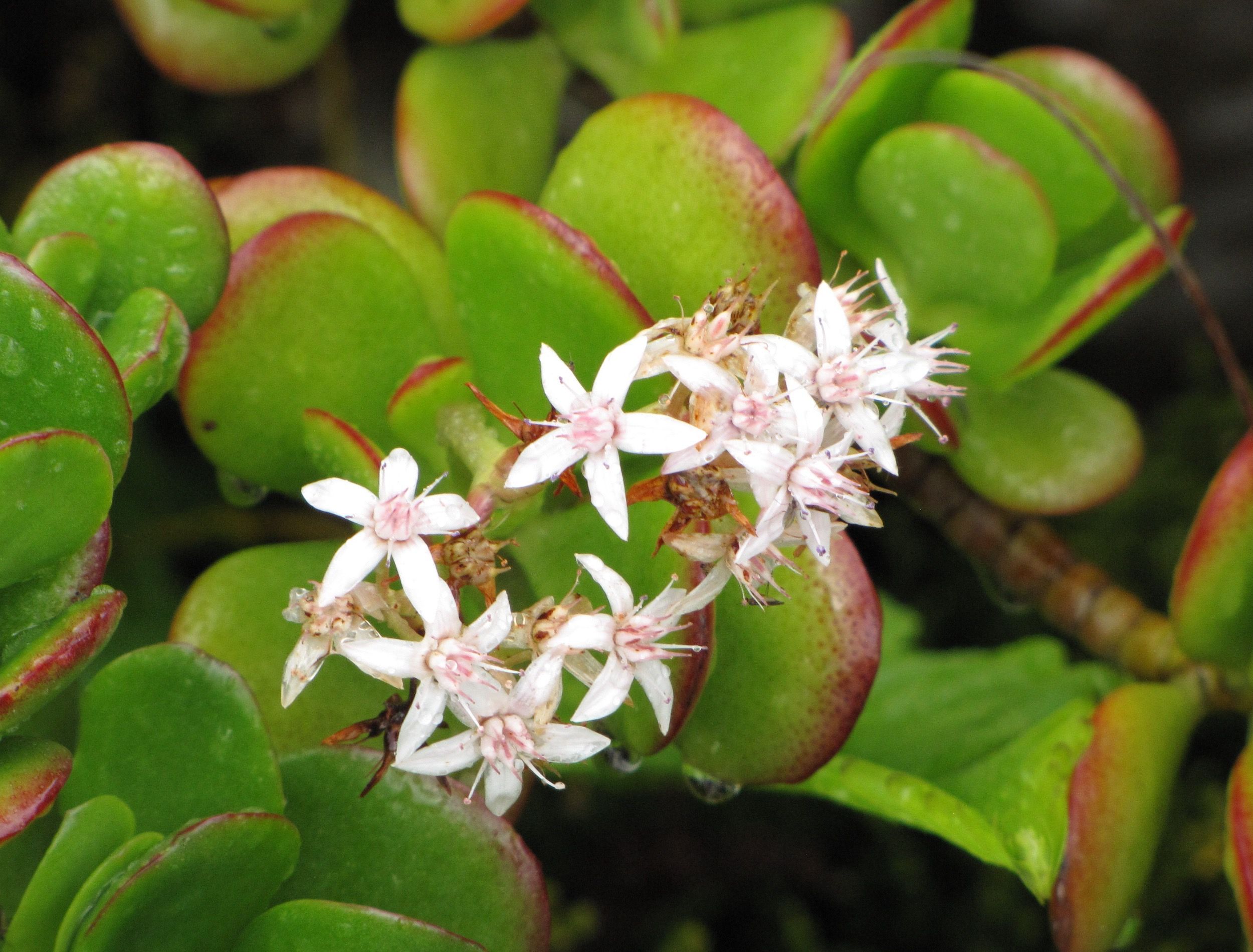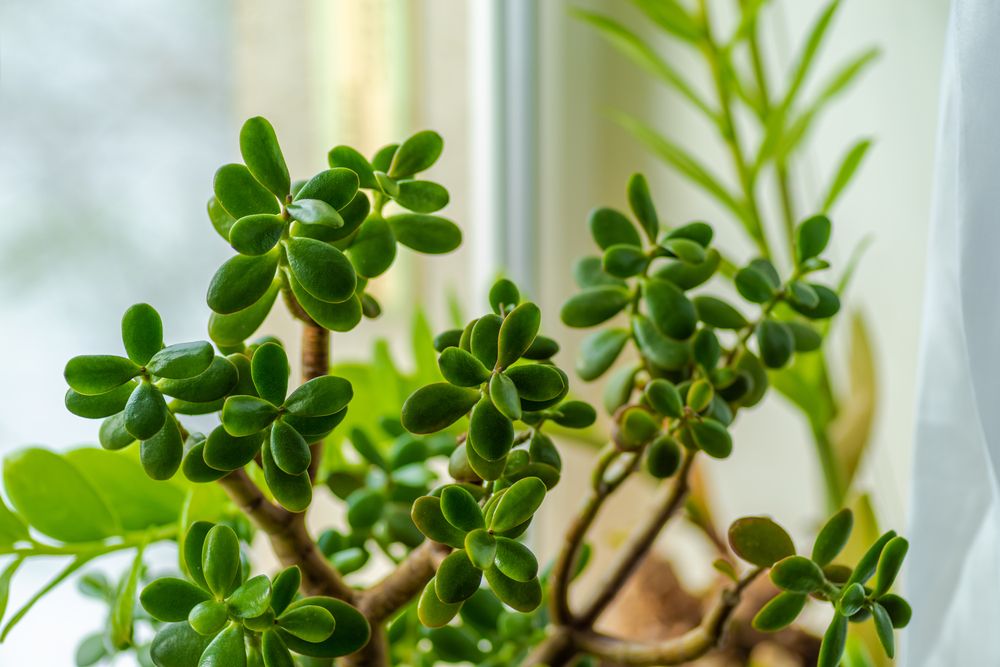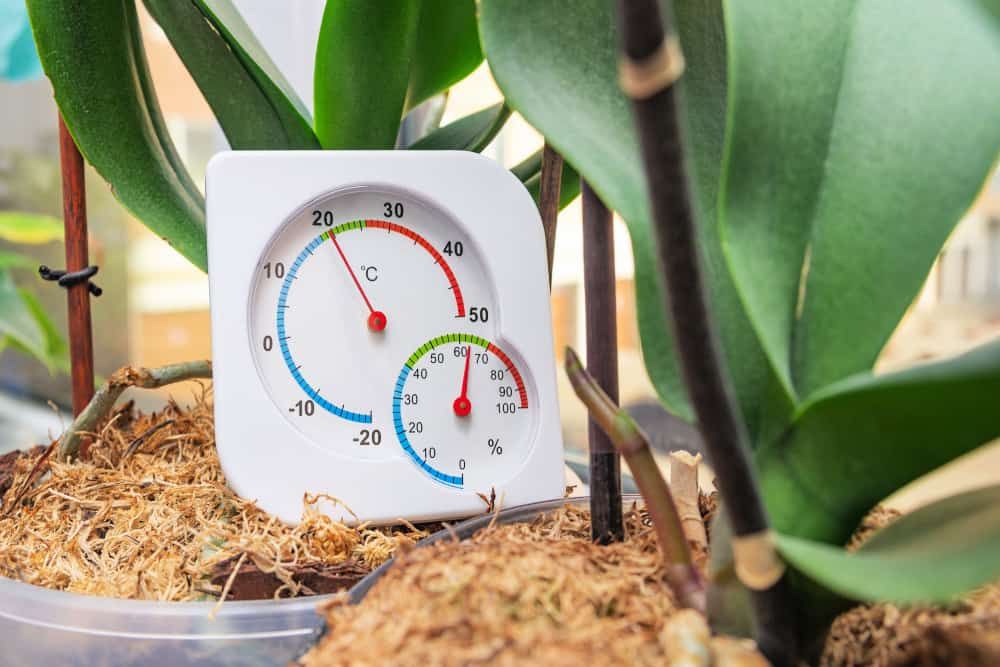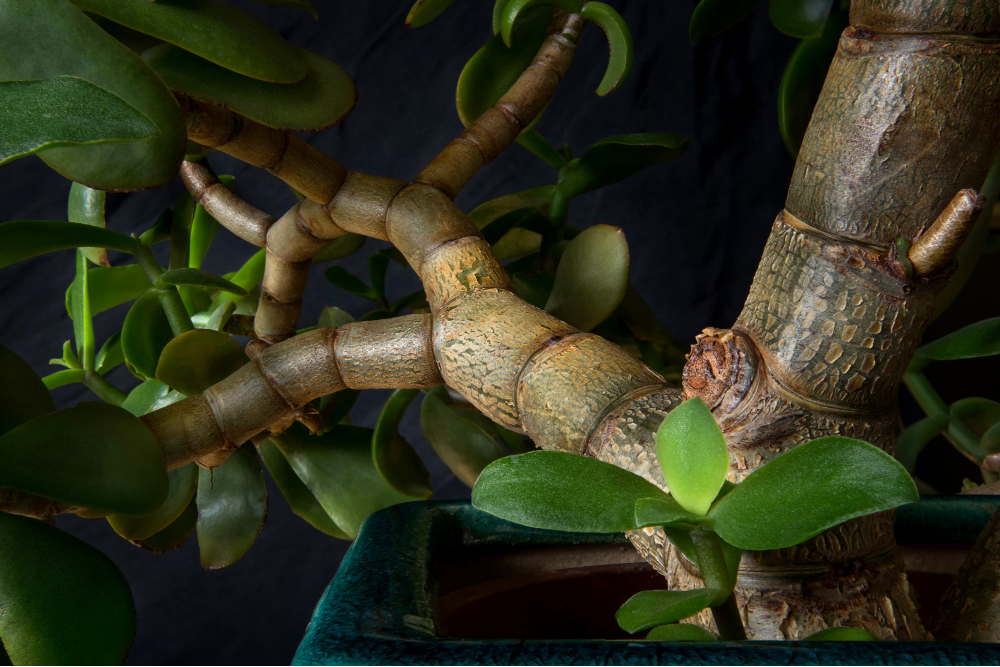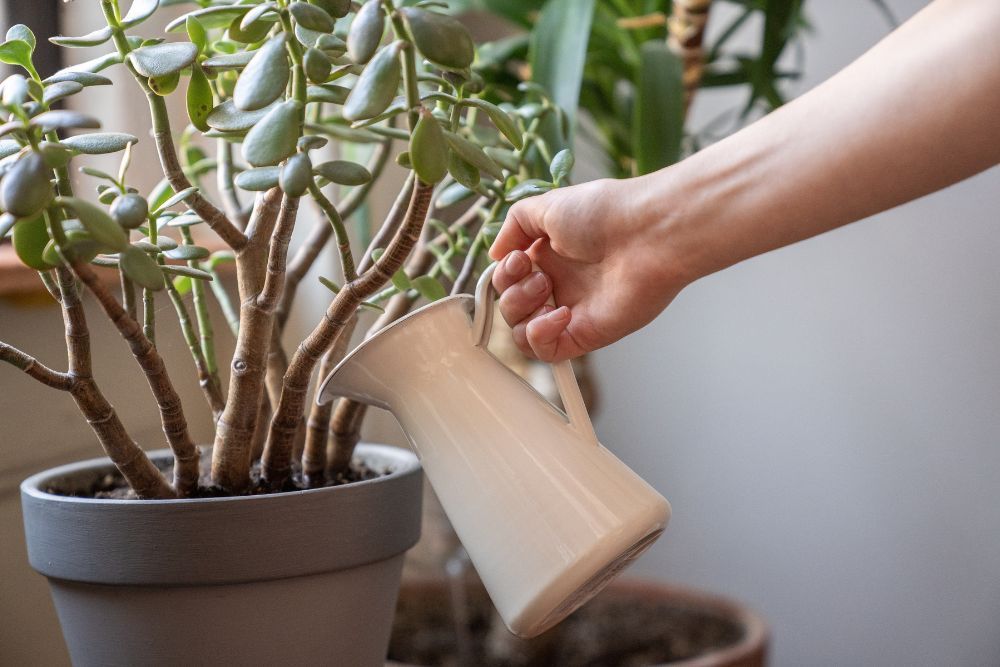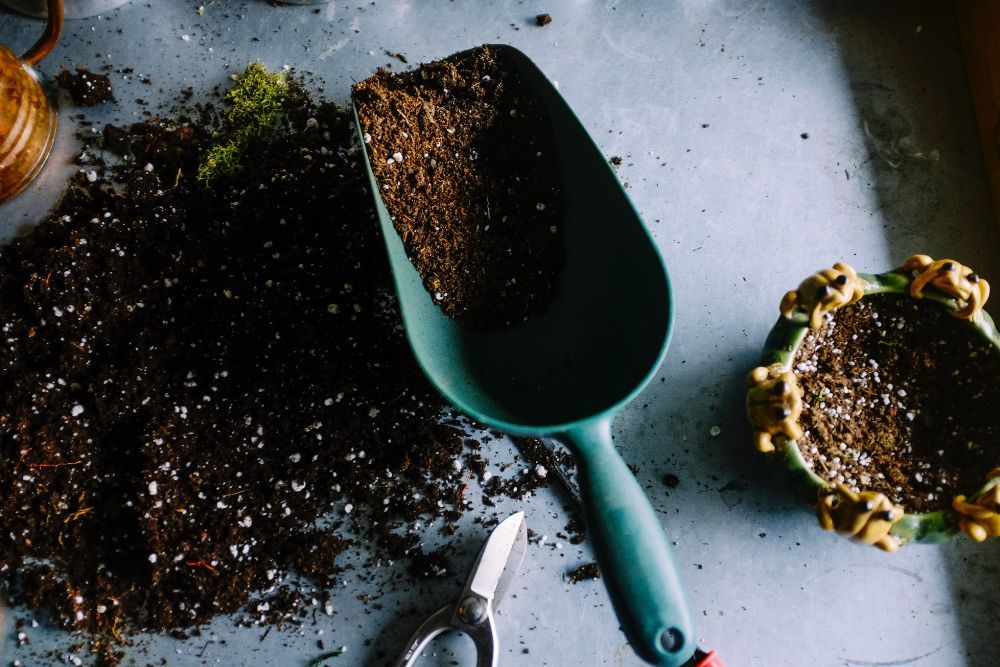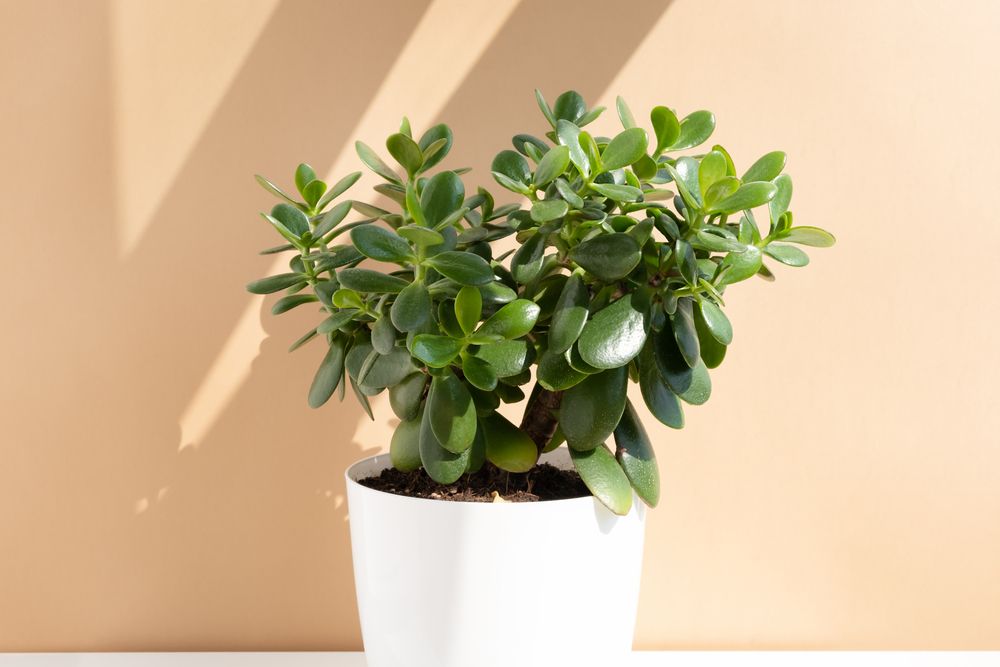Have you ever seen the star-shaped flowers of the jade plant (Crassula ovata) when in bloom? In ideal conditions, this succulent's dazzling soft pink or white flowers cover the plant and give off a sweet fragrance.
Jade plants need specific conditions to bloom when grown outside their natural habitat. So, if you have yet to see flowers on yours, do not worry. With a few considerations or adjustments, your jade plant might bloom in no time.
A Bit About Jade
Image credits: TSViPhoto via Shutterstock
Native to rocky hillsides in southern Africa, the jade plant is a well-known houseplant, perhaps due to its relatively easy-to-grow nature! They love the cozy conditions pots provide and look beautiful when grown as bonsai. Maxing out at around 6 feet indoors, jade plants can live for many years and have a gnarled, aged appearance even when young due to their thick trunks. You can easily propagate jades to multiply your collection or to gift to others!
Jade plants' round, fleshy leaves are green and have a red edge when grown in sufficient light. The thick succulent leaves hold water to help sustain the plant through dry conditions.
Materials to Help Blooms
Image credits: Gary Barnes via Pexels
Depending on your jade plants condition and location, here are a few items to consider having available that may aid in the blooming process:
- Garden gloves
- Garden spade
- Well-draining pot
- Soil
- Perilite or pea gravel
How to Get Your Jade Plant to Flower
Jade plants bloom during dormancy (late winter to spring) after receiving plenty of sunlight over the warmer months. With lower temperatures and available sunlight, these changes signal the plant to start creating flowers. Due to this reliance on nature's cycle outdoors, mimicking these conditions for your indoor plant is the key to attaining blooms.
1. Temperature Drop
Image credits: Yevhen Prozhyrko via Shutterstock
One trigger for the jade plant to begin the flowering process is falling temperatures. For indoor plants, decreasing the temperature to a constant of around 55 degrees Fahrenheit helps your plant initiate the flowering cycle. Protect your jade from drafts or other fluctuations in temperature that may occur indoors.
For the rest of the year, jade plants prefer daytime temperatures to stay between 65 and 75 degrees Fahrenheit, with evening temperatures between 50 and 55 degrees Fahrenheit. A good rule of thumb for jade plants is that if you are comfortable, they probably are too!
2. Reduction in Light
Image credits: aka CJ via Creative Commons
Along with temperature drops in the fall, sunlight decreases as well. To simulate these fall conditions indoors, keep your jade plant in a location that does not receive supplemental light, allowing it to enjoy only natural sunlight during the day and darkness at night. Winter's darker, shorter days are another key to the jade blooming success.
Jade plants need bright sun for four or more hours per day for the rest of the year to be able to flower in dormancy. A south-facing window is a great location to keep your succulent throughout the year. If this is not possible, supplemental light is a great option to increase the light your jade plant receives.
3. Decrease Water
Image credits: Kevin Malik via Pexels
To help signal to the jade plant that it's time to bloom, restrict water. All this occurs naturally outdoors as seasons change, so it is important to follow suit for indoor jade plants. Withhold water for several weeks in the fall before resuming regular watering practices.
Jade plants prefer deep watering, especially during spring and summer. Allow the soil to dry between waterings, as too much or allowing the jade plant to sit in water will cause root rot and leaf drop.
4. Healthy Soil
Image credits: Neslihan Gunaydin via Unsplash
Poor soil means poor health for your jade plant, and that will not help you get flowers blooming! These succulents need well-draining soil to help prevent problems such as root rot. Avoid materials that retain moisture, like peat, and opt for a mix of topsoil and perlite or pea gravel, for example.
5. Repotting
Image credits: Marina Kaiser via Shutterstock
While jade plants love a cozy pot and tight root conditions, it is good to practice to repot your jade every two to three years to maintain a healthy plant. Damage can occur from tipping over when a jade plant is too large for its pot.
If it is time to repot, do so during the active growing season of spring or summer and water sparingly until the plant has established itself in the new pot. Cut back roots at this time if keeping the plant in the same size pot and trim stems and branches to keep it to size.
It's Blooming Time!
Jade plants are popular for their relatively easy-to-grow nature and hardiness. However, to achieve blooms on an indoor jade plant, it is essential to make a few adjustments. From temperature drops to a reduction in sunlight, mimicking seasonal changes is key to triggering the development of those beautiful blooms!
Have you seen a jade plant in bloom? Share these tips and tricks with other plant lovers, and describe your jade experiences in the comment section below!

